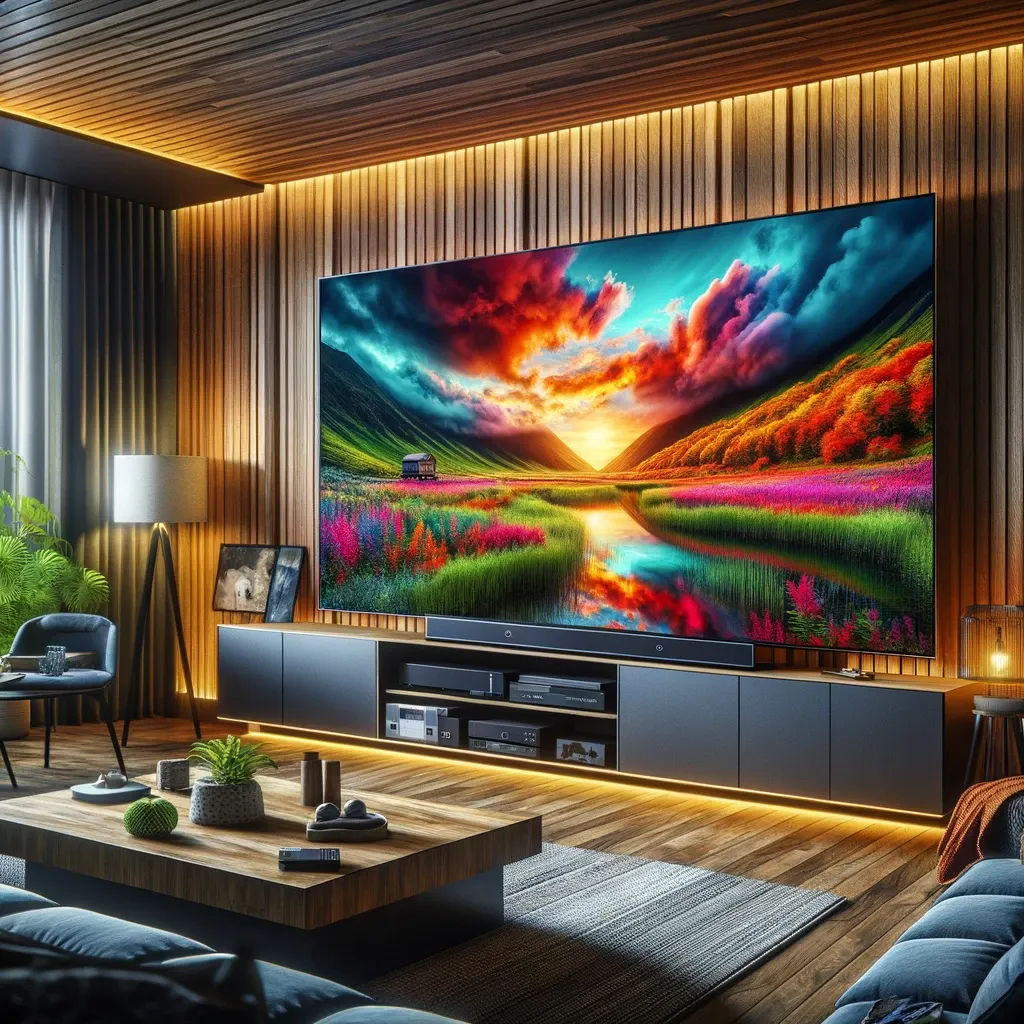
HDR (High Dynamic Range) technology is one of the most important developments in digital visual entertainment in recent years. It allows for much higher image quality and realism in games, movies and photos. In this article, we will explain what HDR is, how it works and its benefits in practice.
Table of Contents
Definition of HDR and its importance for image quality
HDR what does it mean for the end user? HDR technology significantly improves the quality and realism of the presented content. The HDR image is subjectively better for the viewer by increasing the brightness range between the darkest and brightest areas.
The dynamic range of an image is the ratio between the highest and lowest brightness that can be displayed. The wider the range, the better the image captures the actual contrast of the scene and allows you to see more detail in both dark and light sections.
Dynamic range and image quality
The standard dynamic range on most monitors and TVs is around 300-500 nits. This means that the brightest areas can be up to 500 times brighter than the darkest areas. This is too little to reflect the full contrast occurring in reality.
By comparison, the human eye is able to perceive a brightness range of 20,000 nits. HDR technology allows you to get closer to this value, making the image much more realistic and vivid.
HDR technology what is it?
HDR works by increasing the bit depth of color in each pixel. Standard images have 8 bits (resulting in 256 brightness levels), while HDR uses 10, 12 or even 16 bits. This allows accurate reproduction of a wide range of brightness, from dark shadows to dazzling reflections.
HDR images also benefit from a wider color palette. This makes the colors more vivid, saturated and natural.
HDR effect: Better depth and realism
The effect of HDR is a much greater depth and realism of the image. Night scenes become darker and more dramatic. Bright parts, such as the sun or reflections, are reproduced with greater fidelity.
The HDR image better reflects the contrast between light and dark areas, so that the so-called “dark” areas appear. tonal depth. This allows you to see more detail in shadows and clearances.
HDR and HDR10+ signals: what they are and how to recognize them
In order to display an HDR signal, the source must provide a suitable HDR signal. This could include a 4K Blu-ray player, a next-generation console or a streaming platform.
The signal encodes an increased range of brightness and color. To recognize it, check the output settings in the video source or the information displayed by the TV/monitor.
HDR standards: HDR10+, Dolby Vision and others
There are several standards for recording HDR metadata. The most popular are HDR10, HDR10+ and Dolby Vision. They differ in the way the brightness information is encoded in each frame.
HDR10 is an open standard and does not require a license. HDR10+ and Dolby Vision add support for variable tone mapping over time. This makes the HDR quality even higher.
HDR mode on the phone and what is HDR on the camera
Many modern smartphones and DSLR cameras offer an HDR shooting mode.
What is HDR on a phone and what does HDR on a camera mean? It allows capturing a wider dynamic range by automatically combining several shots taken with different exposures. HDR mode works especially well in difficult lighting conditions.
The role of HDR technology in computer monitors
HDR-enabled computer monitors provide better image quality when viewing HDR videos and photos. In addition, they allow you to enjoy more realistic graphics in video games that implement HDR rendering.
A monitor with HDR should offer a brightness of at least 500 nits and support HDR10 to take advantage of the technology. HDR significantly improves the visual experience in games and movies.
What is HDR on a TV
HDR TVs, with their higher contrast and improved detail, provide a much better experience when watching movies and TV series. Support for standards such as HDR10 and Dolby Vision allows the full potential of HDR image sources to be realized.
To enjoy HDR images, in addition to the right TV, you’ll need a compatible player (such as 4K Blu-ray) or access to a streaming platform that offers content with this technology.
HDR applications in industry
HDR technology is used not only in entertainment, but also in industry. HDR-enabled industrial displays and monitors allow more precise control of machines and production processes through better detail and contrast.
HDR improves the readability of HMIs and data visualization in monitoring centers. It is also used in the medical, transportation and military fields wherever accurate visual perception is crucial.
Summary
HDR technology is a huge step forward in terms of image quality and realism. With increased contrast and tonal depth, scenes are reproduced with much higher fidelity and level of detail. To take full advantage of its potential, it is worth taking care of compatible content sources and appropriate playback equipment. We hope that it will now be clear what HDR is and in which applications it will find application.

